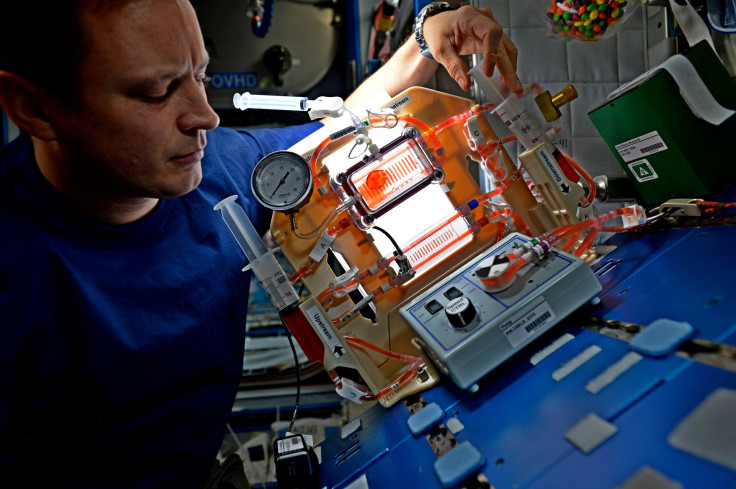Recycling Water In Space: NASA Working On New Evaporation, Purification System

Think of everything you do during the day, all of the small tasks you complete. Now imagine trying to do them without gravity at play. Even the most mundane of tasks, like eating breakfast or going to the bathroom, become difficult without gravity. That’s part of the reason why life on the International Space Station is so unique, in addition to the whole living in space thing.
NASA researchers are constantly trying to make living processes on the ISS more efficient and reliable. Currently they’re working on a simple solution to handling the water, and specifically evaporation, on the ISS. The water filtration and collection process is key to keeping the astronauts on board healthy and hydrated. Everything from urine and sweat to the moisture in the astronaut’s breath can be collected and returned to general supply of water on the craft, through complex processes of course.
Read: Space Station Chores: Keeping ISS Clean, Free Of Germs
Currently the system is complicated, heavy and delicate. If one thing goes wrong or breaks the astronauts water supply could be contaminated or the system could fail entirely, according to NASA. The current system has special parts that separate liquids and gases differently for the recycling process. The parts move, which makes them more vulnerable to damage.
That’s why NASA established the Capillary Structures for Exploration Life Support investigation and a team to conduct research on board the ISS. The investigation will hopefully lead to a new simpler way of water recycling and carbon dioxide removal for water and gas containing liquid on the ISS. The new system is basic. It consists of geometric shapes in a variety of sizes that have to be 3D printed and that clip into place.
Read: Solar Eclipse 2017: NASA Wants You To Help Collect Data On Event
The investigation into the use of the new system is being conducted in two parts, evaporation and carbon dioxide removal. The evaporation system could potentially allow for the fully recovery of water expelled in an astronaut’s urine. The Capillary Structures system will be filled and monitored from the ground with time lapse photos. “The structures are set up to have different geometries, different angles, different heights, all these different parameters that we are varying across these structures to get quantitative data of evaporation in low gravity,” said the co-director of the project, Kyle Viestenz.
The carbon dioxide removal model involves a series of waterfall like structures. When a liquid sorbent, a material used to absorb CO2 gas, comes in contact with the air, it pulls out the carbon dioxide. The geometry of the capillary structures creates almost a fake gravitational force that keeps the liquid moving with surface tension. This system is built to aid liquids in flowing rather than evaporating, like the first system is, according to NASA.
Lighter more efficient systems like this will be necessary for future deep space missions, like those to Mars that Elon Musk and NASA are both working towards. Additionally, the projects have implications for creating simple filtration and purification systems for on Earth as well.
© Copyright IBTimes 2024. All rights reserved.





















